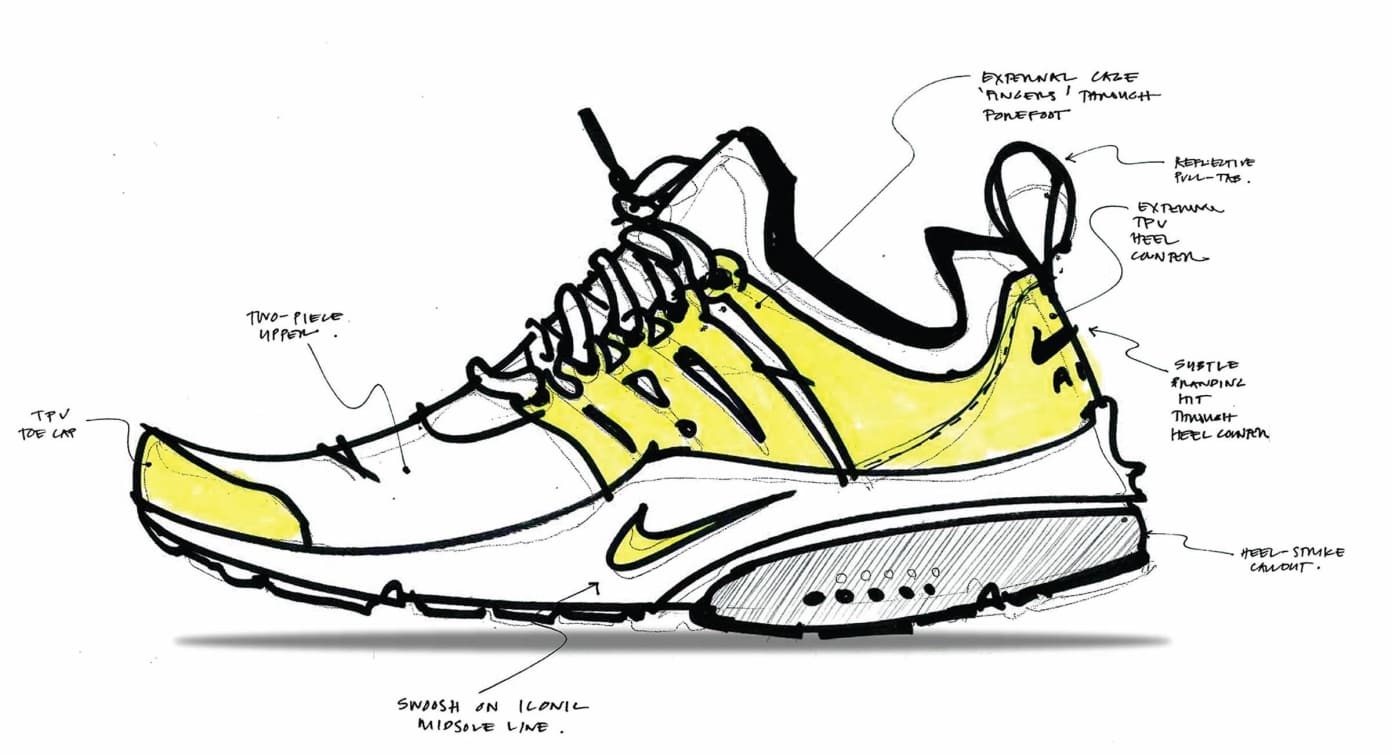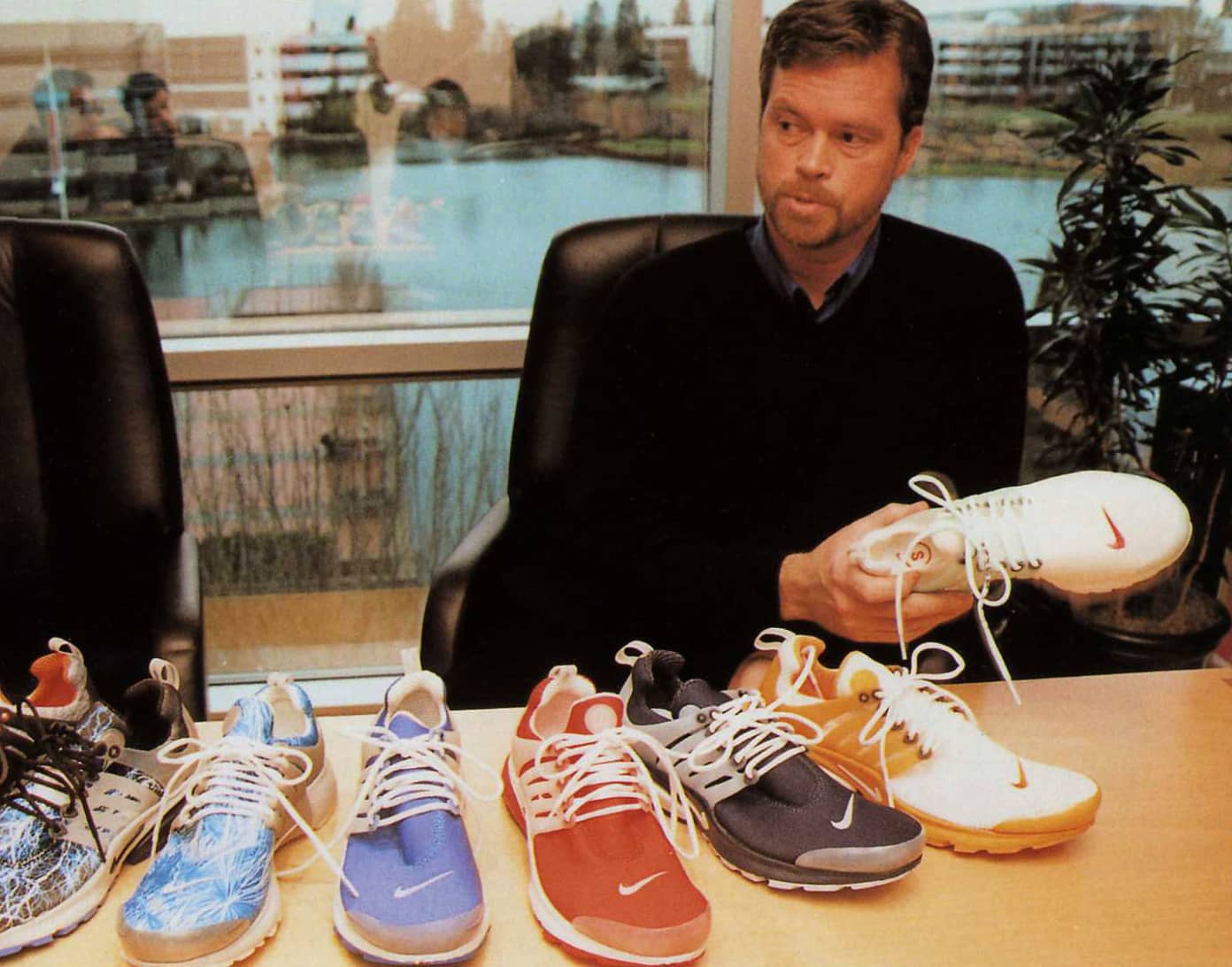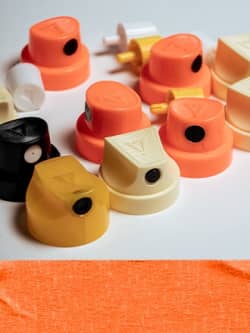#FactsFriday: The Nike Air Presto

The Nike Air Presto is considered by most as the peak in innovation in sneakers from the Swoosh. It is also probably one of the most ‘Nike’ Nikes out there. It ticks all the brand’s core running design ethos boxes: lightweight, formfitting, innovative design with purpose.
The Presto story starts with designer Tobie Hatfield, younger brother to legendary Tinker Hatfield, meeting in Korea for production. All those at the meeting were given new shoes to try, with Tobie absolutely hating the fit of his. “When I put the shoe on and stood up, the collar splayed out,” he recalls. This led the younger Hatfield brother on a 4-year journey to create the Nike Air Presto.
His goal was s simple one. To create a sneaker that fit immaculately and was incredibly comfortable. But that was impossible to do with the way that Nike was making sneakers at the time. Even sneakers like the Huarache that were designed and constructed in the most contemporary and unconventional way, were limited in their flexibility. This was due to their constraints of leather and mesh brought together with stitching.
The first prototype of the Presto in 1996 wasn’t even called the Presto at all. That name would only be given to the model after 2000. The shoe was unremarkable at first, with its only uniqueness coming from the “V Notch.” Remembering his splayed out collar in Korea, Tobie cut out a whole section of the sneaker from the collar to the sole, opening up the entire shape of the upper to move in different ways. Suddenly there was more give throughout the shoe to flex and bend with every step and stride of the runner. Instead of the runner’s foot being housed by a rigid construct of leather and mesh, the sneaker responded to their movement.
With the first prototype created, Tobie gave the shoe to a co-worker to run in, hoping his feedback would be positive. Tobie was so eager to hear this feedback that he gave the co-worker a size 9, knowing full -well the tester wore a size 11. But to his surprise, his colleague had nothing to say about the size. The V-notch created enough flexibility that the shoe formed to the larger size. The size 9 sneaker became a size 11 sneaker when it needed to be without sacrificing performance. “In addition to improving the heel fit, the V-notch relieved tension in the collar and created a hinge effect that helped the shoe grow in length,” Tobie Hatfield said. It was a total reversal of how athletes and footwear interacted.
This revelation led Tobie to ditch Nike’s traditional sizing all together. He thought if one sneaker could fit a range from size 9 to 11, was sneaker sizing even needed? Hatfield saw this fit more like a T-shirt. “We don’t do half sizes for our T-shirts; we do small, medium and large,” Hatfield thought. “So what if we tried the same thing for footwear? What if we gave the athlete a range?” This new understanding was ground-breaking, but it wouldn’t be fully realised until many years later. 
The concept of the Presto continued to be developed over the intervening years, but under a slew of different project names. Each step closer to the Presto was proven through designs that were released on their own. The V-notch got its heyday with the Air Gauntlet in 1998, the seamless interior and mesh upper were perfected in 1999 with the launch of the Air Zoom Drive (both below). But these two elements weren’t enough to finally land at the Presto. Hatfield needed the right materials.
Leather was too stiff and heavy. Mesh was limited in stretch and applications. The neoprene used on the Air Huarache was designed to trap heat in, exactly the opposite of what they wanted the Presto to do. None did the job. This was until they found Spacer mesh. A material traditionally used in the medical industry offered the flex and stretch of neoprene without the heat, and they could shape it into the sneaker that they wanted. A rubber cage was installed over the upper for structure and a place to thread the laces, and a rubber cap at the toe added protection from debris. Tobie therefore opted for a size range of XXS - XL, like a tee, instead of traditional sizing. It wasn’t long before Nike were calling it a “T-Shirt for the foot.”
Now Hatfield had the shoe he had envisioned back when his sneaker’s collar splayed out in Korea. But it didn’t have a name. Desperate to get the sneaker onto the market asap, Nike sent out a call asking all creatives in the country for help naming the new silhouette. Over 300 submissions were received, with Presto Magic winning over the hearts of most behind the sneaker. Inspired by the magical fit, the idea was that the shoe was such a marvel it might as well be the breathtaking reveal of a magic trick that comes with a magician’s utterance of “Presto!” That name stuck and the shoe was ready for the public.
If you were amazed with the sneaker's innovation, its roll-out was equally momentous. Thirteen colourways of the sneaker released all at once, and each colourway had its own bespoke animated TV spot, featuring designs from Monica Taylor and nicknames courtesy of Dylan Lee. Twelve of those thirteen colourways had unexpected names and were used as inspiration for the spots. Names like Abdominal Snowman, Brutal Honey, Orange Monk and Presto Bill stood out, with the 13th pair never getting a name. 
The imaginative names with companion advertisements, plus the timing of the 2000 Sydney Olympics, made the sneaker an immediate success. However, Nike soon became interested in its Nike Free range, an off-shoot of the Presto, with the Nike Free sales soon taking the energy out of the Presto. It would be at least another decade before the Presto would return to the culture from a different angle.
The Presto began to enter the fashion world when it made its comeback. 2001 saw Eric Clapton wear the Presto as his tour sneaker, with the following year seeing the trio known as HTM (Hiroshi Fujiwara, Tinker Hatfield, and Mark Parker) reconfigured the Presto into the HTM Air Presto Roam. Fujiwara used it again in 2004 for a Hello Kitty collab, and the Presto was featured in a bizarre TV ad called, “Le Poulet en Colere” (“The Angry Chicken”). In an attempt to cash in on the French parkour or free running trend, the ad showed Sebastien Foucan, one of the sport’s founders, being chased around a city by a chicken. The spot is narrated in both French and English, and is an iconic must-watch.
The Nike Presto’s big break in the fashion world started to really come in 2016. Acronym, the German fashion/tech company, was given the Presto model and they went absolutely nuts with it. They raised the sneaker to a mid, added a pair of zippers at the heel, and completely shifted hyperfuse supports for seemingly aesthetic reasons. The sneakers sold out in a flash and continues to demand over $1000 on the resale market. The biggest break for the Presto, however, was thanks to the much-talked about Virgil Abloh. The collaboration deconstructed the shoe, bringing the inside out, showing you the intricacies of Hatfield’s work and the Spacer mesh fabrication. The Presto is considered one of the best of Virgil’s “The Ten” collection, with a new white and black follow- up version rumoured to drop soon.















